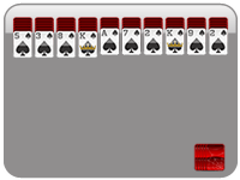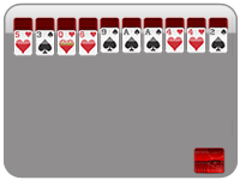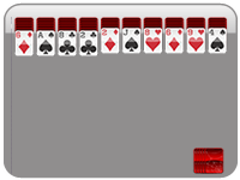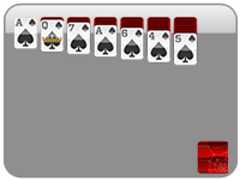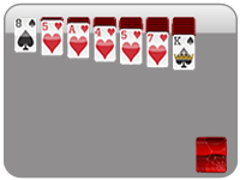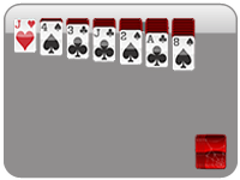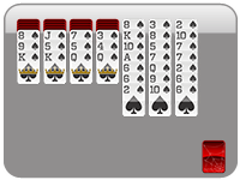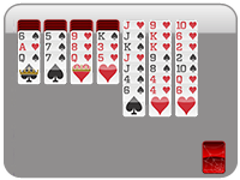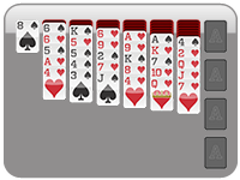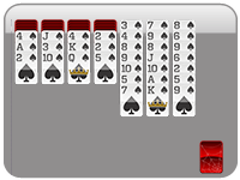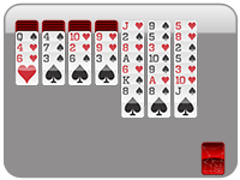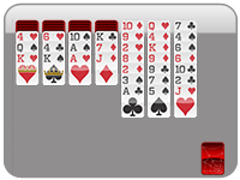Card Games for One Person: Fun Solo Activities to Enjoy
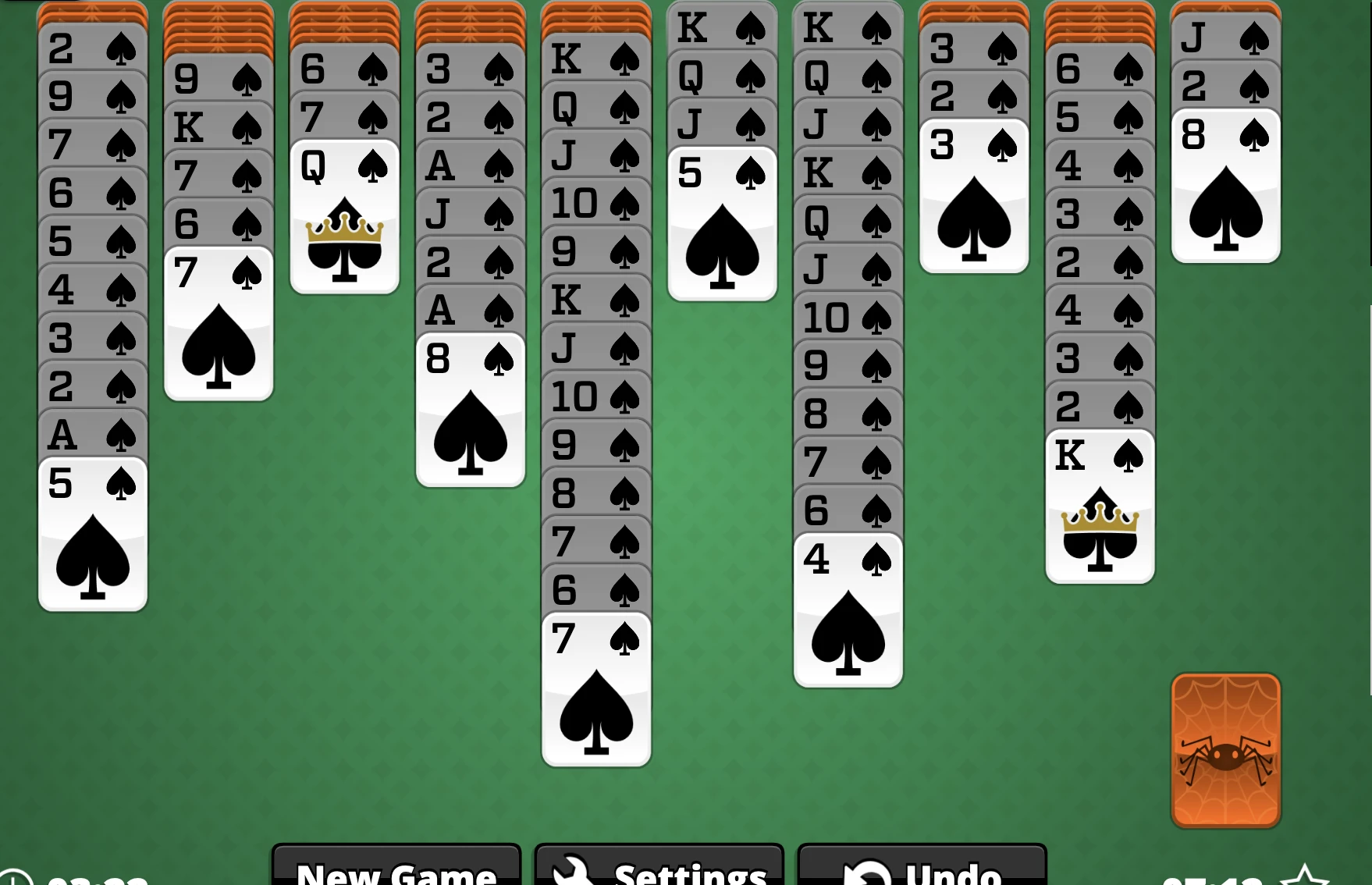
Playing cards boast a rich history dating back to at least 9th century China while even the French-suited cards most commonly used today have existed since the 1400s. While cards are often thought of as a social activity enjoyed by groups of friends (or played competitively), card games for one person can be equally entertaining.
From Spider Solitaire to FreeCell, there are plenty of games to choose from. Each of them can deliver hours of fun while simultaneously helping you develop skills to enhance your multiplayer card games as well as many other aspects of your life. Here’s all you need to know.
Benefits of Playing Solo Card Games
While there’s a lot to love about multiplayer card games including Spades and Poker. Nonetheless, there is something special about playing solo card games. When it’s just you and the deck of cards, you will gain the following advantages;
- An opportunity to cure boredom without requiring other players, which is hugely beneficial as you are more likely to be bored when you’re alone.
- A chance to play the game of your choice while simultaneously avoiding the threat of arguments or falling out with other players during the activity.
- You can play the game at your pace, which allows you to think about the moves you want to play and develop a strategy without stress caused by other players.
- There’s no limit on how long you play the game, making it the perfect activity regardless of whether you have a few minutes or several hours available.
- You can also take breaks and come back to a game if you want to. You are in full control of the activity, which adds to the convenience and enjoyment.
Even if you love the social side and competitive aspects of multiplayer games, incorporating solo-player card games into your routines is highly advised. Not least because they provide a unique perspective and level of engagement that can’t be surpassed.
Top Solo Card Games You Must Try
Appreciating some of the reasons to embrace solo care games is one thing, but it’s equally important to find the best card game for your requirements and preferences. There are many to choose from. Here are five that every player should try at least once.
Spider Solitaire
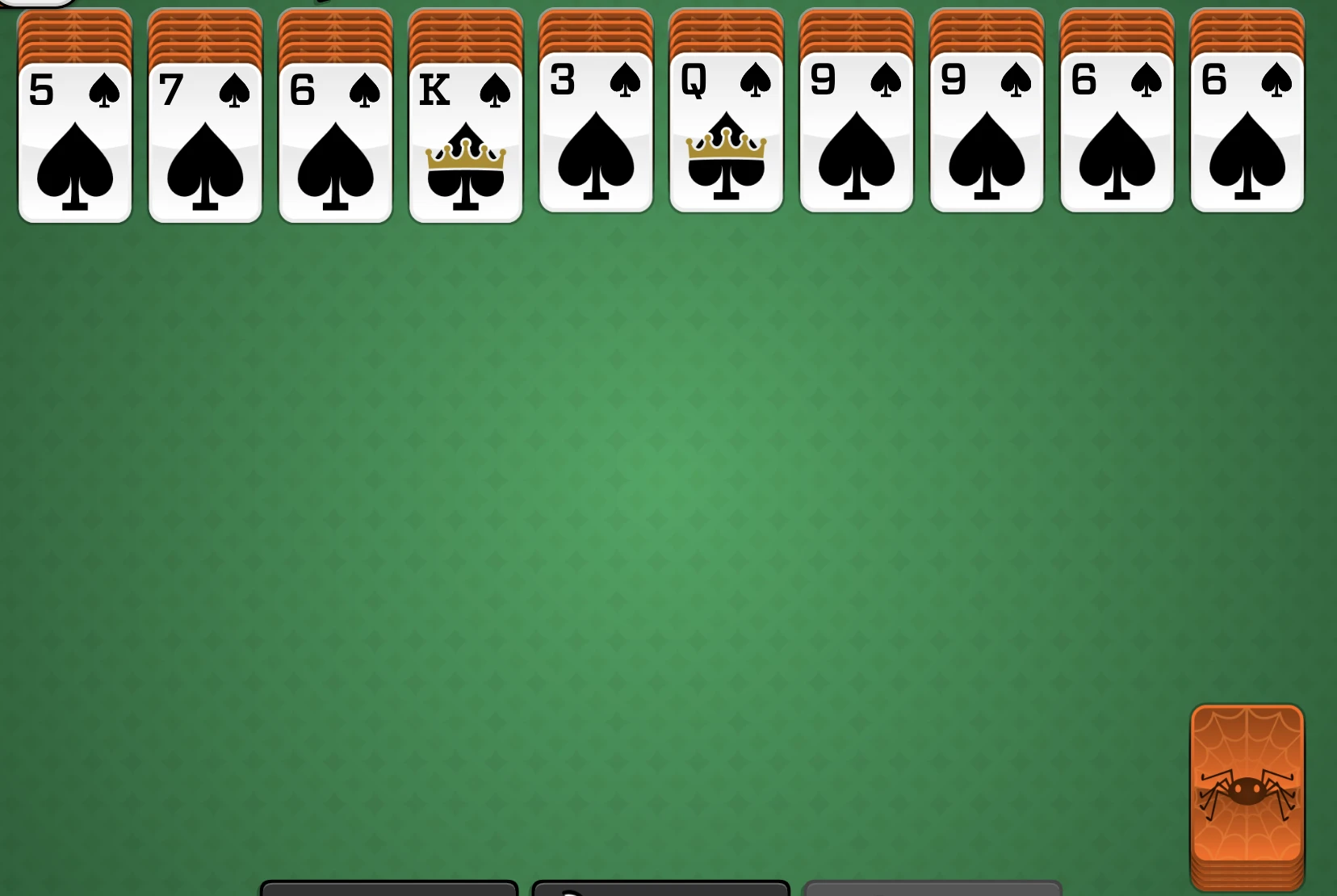
Spider Solitaire is actually played with two decks for a total of 104 cards. The aim of the game is to create eight piles descending from King to Ace. Once a full sequence is completed, it is removed from the game. The aim is to remove all cards. With cards split into 10 columns, though, the majority of cards are face down. You reveal each card by moving the face-up card to another pile (such as moving a 9 onto a 10). While you can move any 9 onto any 10, the sequence can only be removed from the game when it’s suited.
Unlike other forms of solitaire, there is no foundation, although there is a stock. When played with all four suits, it is the hardest solitaire game available. However, with online play, you can reduce this to two or even one suit without the need for additional decks.
Memory
Memory is a simple pair-matching game that is particularly popular due to its accessibility, making it a great choice for kids and/or beginners. The game is very simple. Simply lay out all 52 cards face down in a grid (4 rows of 13 columns works well). Following this, you simply turn over two cards at a time and look for a pair of cards that carry the same value from different suits. For example, if you pick up the 7 of Diamonds and the 7 of Clubs, that’s a pair.
When you find a pair, remove them from the grid. The aim of the game is to clear the entire grid. This game has a 100% solvability ratio, which is great. Over time, you can compete against yourself by aiming for a quicker time or a lower number of moves.
Klondike Solitaire
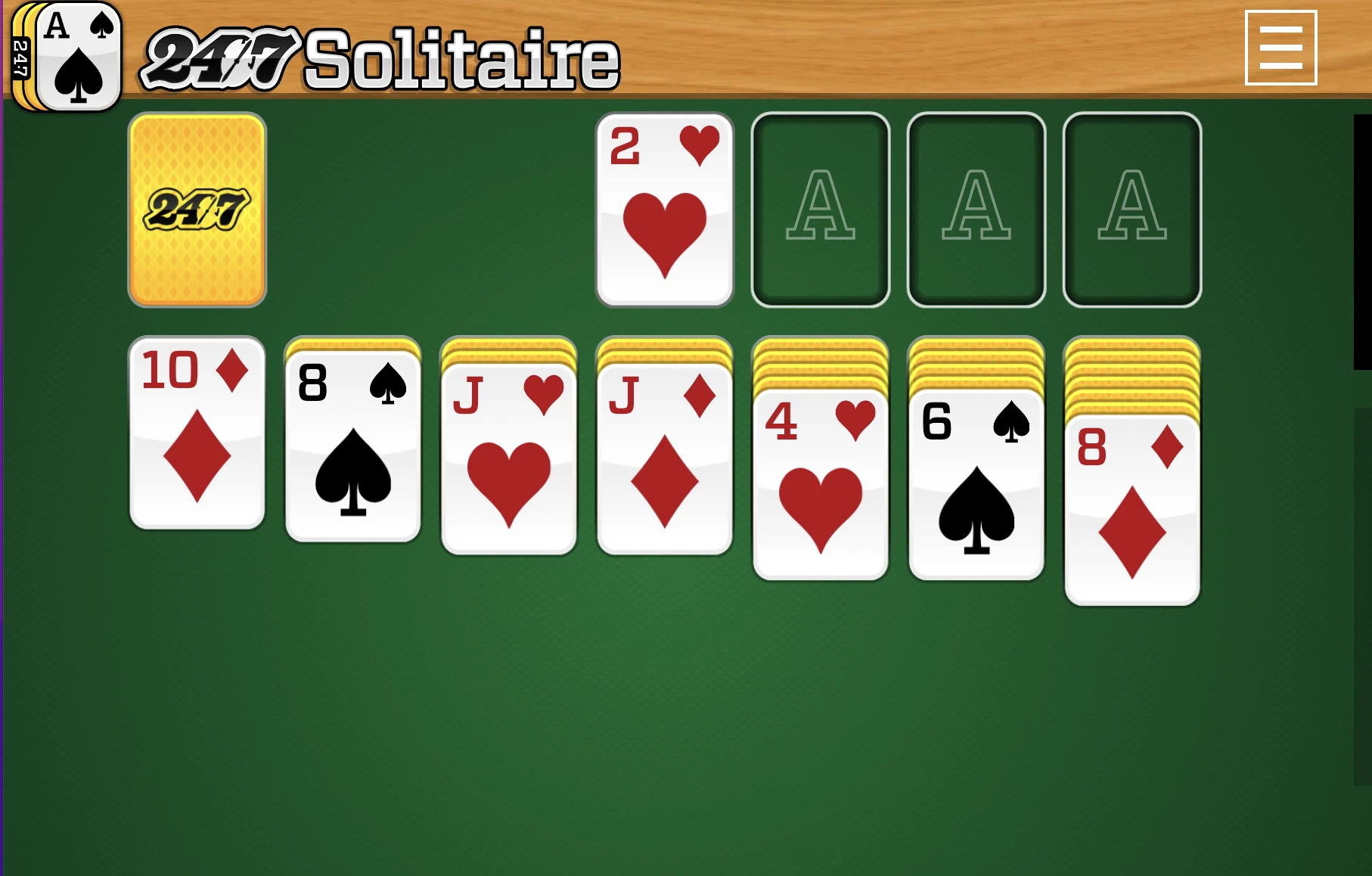
Klondike Solitaire, also known as Traditional Solitaire, is played by millions. Cards are dealt in the tableau via seven columns (starting with one in the first column and seven in the final column) with only the top card facing up. The remaining 24 cards are placed in the stock. The goal is to move all cards up to the foundations, ascending from Ace to King. Sequences of alternating and descending cards (so a Red Queen plays on top of a Black King) can be made in the tableau so that the face-down cards can be revealed.
When the player can’t make a move, cards can be turned over from the stock. For the easiest challenge, turn over one card at a time. For increased difficulty, try turning over two or three cards at a time.
Clock Solitaire
Clock Solitaire, also known as Round the Clock, is a fun variant. To set up the game, you should use a single deck to deal 13 piles of four cards. All cards should be face down and positioned to look like a clock. The first card is placed at the 12 o’clock position, before going round clockwise with cards 2-12, followed by the 13th card going in the middle. Complete the circuit four times and then turn the final card over in the middle of the clock. The card then moves to the appropriate pile. For example, the 6 of Hearts would move to the 6 o’clock pile. Next, you turn over the top card from the 6 o’clock pile. Kings go in the middle.
This card then moves to the appropriate pile and you follow the sequence. The game is won if you are able to turn over all cards. However, if all four Kings turn, you won’t have any more cards from the middle pile to play. It’s a game of luck, but lots of fun.
FreeCell Solitaire
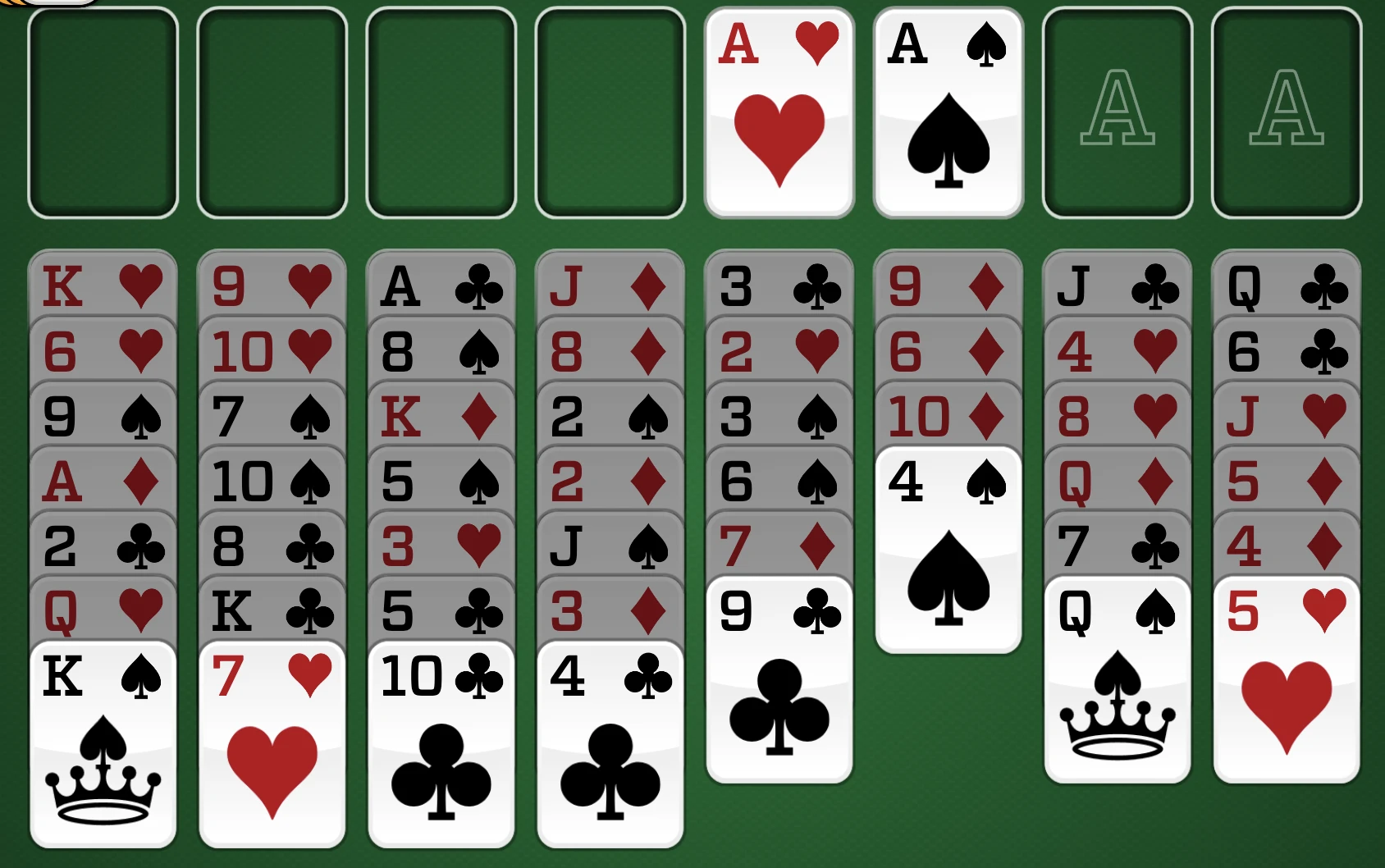
FreeCell Solitaire is a variant of Klondike. It still features a tableau and the foundations (home cells). However, the stock is replaced by four temporary spaces (free cells) that are the safety net when a player runs out of moves. All 52 cards are dealt in the tableau, forming eight columns where columns 1-4 have seven cards and columns 5-8 have six. Only the top card on each pile faces up. Once again, sequences can be made with descending cards of alternating colors while the aim is to move all cards from Ace to King to the home cells.
When forming sequences, you can only move as many cards as there are free cells plus one extra card. So, if you have two free cells, only three cards may be moved. If a column becomes empty, you can move cards into this column to reveal another face-down card.
Mastering Spider Solitaire: Tips & Tricks
When looking for solo player card games that deliver the best rewards, it’s not hard to see why Spider Solitaire is so popular. The fact that it uses two decks means that the fun lasts longer. Moreover, the fact that you can play at multiple difficulties thanks to one, two, and four-suit variants makes it an ideal choice for players of all abilities - not least because novices can move through the ranks with experience.
Here’s how you can master Spider Solitaire to get more enjoyment and optimized skills benefits:
Understand the Game
It’s hard to master any card game unless you truly understand it. You can still beat Spider Solitaire without the basic knowledge, but knowing the variations and terminology can help you think more strategically about each move. The game has eight columns while there are also eight sequences from King to Ace that you’ll need to build - hence the name Spider.
When setting up the game, the first four columns have five cards in them while the next six have six cards each. The remaining 60 cards are in the stock, with a new row of 10 being created each time you decide to play from this pile. It is easier to clear the first four columns, thus creating an extra space to store cards. This simple piece of knowledge could help you choose between two possible moves.
Of course, it’s important to know that sequences run in a descending and suited order. Without knowing this, it’ll be impossible to make the right moves and beat the game.
Simple Tips to Help New Spider Solitaire Players
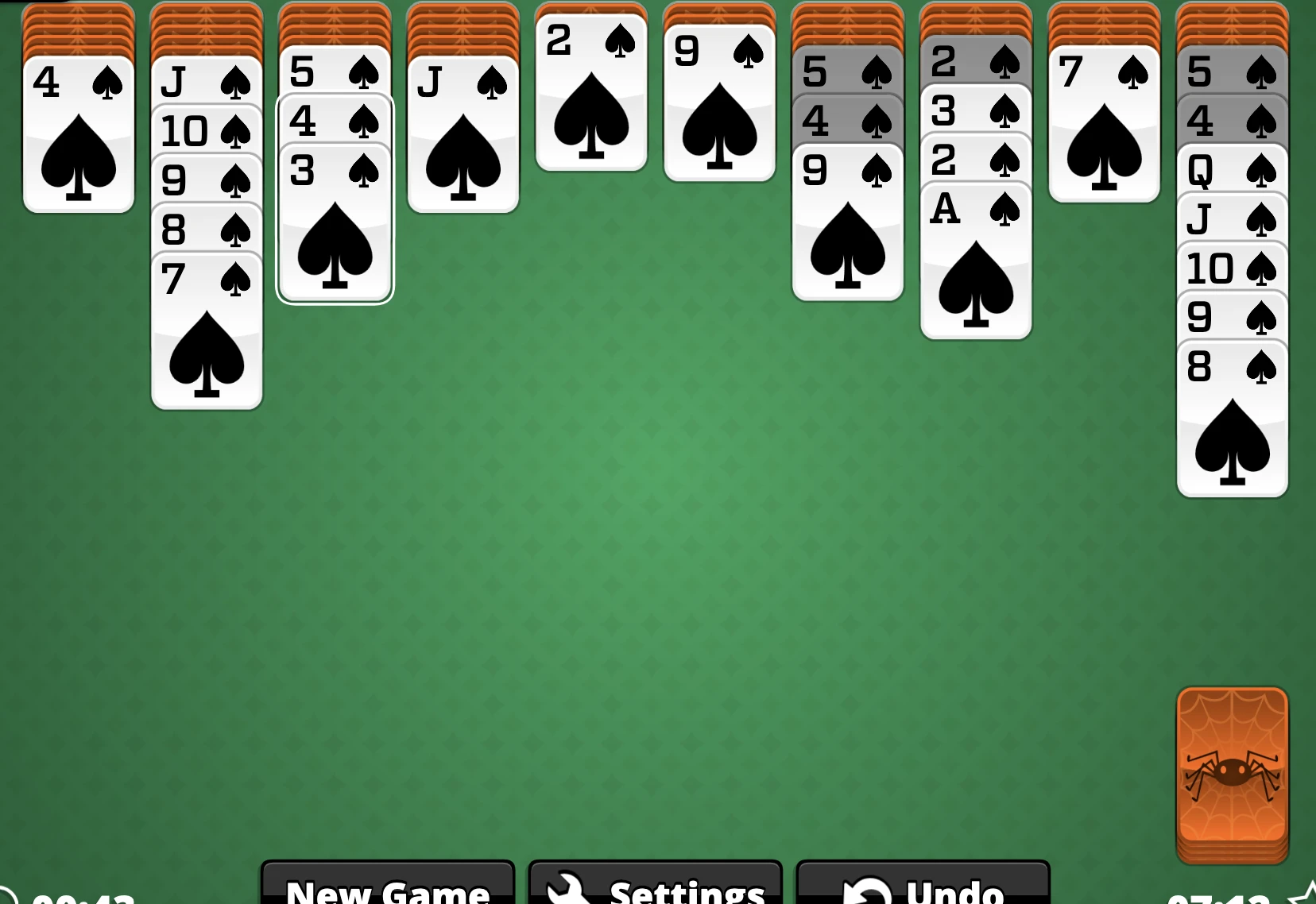
If starting out with Spider Solitaire having already played Klondike and FreeCell, it shouldn’t take too long to understand the functions of the game and how to plan several moves ahead to help reach your end goal of creating suited sequences. Nevertheless, moving up to 104 cards can be daunting, even if only 44 start in the tableau. Therefore, adapting your early experiences of the game accordingly is vital. Here are some of the best ways to do it;
- Begin with one-suit Spider Solitaire as this allows you to first focus on building descending sequences within the tableau rather than concentrating on foundations or home cells, as you will be used to from other solo player card games.
- Focus on trying to create empty columns as this allows you to move a card or sequence of cards, thus revealing the card underneath, which may potentially start a new sequence or move to an existing one.
- Try to start sequences with the highest-ranking card available. This means that more cards, both face-up and face-down, can subsequently make their way onto this sequence. Conversely, if you had a row of low cards, there’s no manoeuvrability.
- While creating stacks/sequences is important, you should not lose sight of the fact that the aim is to get all cards facing up. If every card has been revealed, your chances of completing the game will be very high.
- Remember that you only have six moves to play from the stock, which is different to Klondike. Therefore, you will want to play all available moves before turning over the next row of cards.
As a new player, you should also take the time to think through each move. There is no need to rush the game, especially as it is a solo player activity. Crucially, you should know that not every game can be completed. So, if you do lose, it should be seen as a learning experience rather than a sign of failure.
How to Test Yourself Further
Once you start to beat one suit Spider Solitaire on a frequent basis, you can test yourself further by moving from one suit to two. Once you get to grips with two suits, you may even wish to focus on four suits.
When you do, one of the key issues to consider is the balance between building suited sequences to remove cards from the game and alternating sequences to reveal more cards. On the one hand, you can’t win the game without suited sequences. On the other hand, though, waiting for the suited successor to become available may prevent you from moving a card, which could then stop you from unveiling the face down card below.
Tactics to Help You Win at Spider Solitaire
When played with four suits, Spider Solitaire is the hardest solitaire game of all. After all, you need to create eight sequences while there are only two of each suit available. Meanwhile, turning to the stock will mean that you have to place a new card on all 10 columns.
Consequently, you will need to complete additional moves before turning over cards found below. This should highlight the need to build a clear strategy that maximizes your hopes of success. Here are some of the key steps that can help you become a more accomplished player:
Focus on Turning Over New Cards
Each card you turn over could open the door to a new set of moves. For example, if you have a 7 and 9 already showing, unearthing an 8 allows you to move the 7 followed by the 7-8 combo. This means you will have turned over another two cards, which could have a snowball effect to release more moves without needing to reach for the stock. Likewise, each card turned over in the tableau is a step closer to creating an empty column, which offers further flexibility and can allow you to move a particularly difficult card out of the way.
Break One Sequence to Make Another Bigger
When you have two partial sequences of the same suit, you may think that it doesn’t matter how they are split. Ultimately, though, completing one of the sequences will remove them from the tableau, thus getting you 12.5% closer to completion. So, if you have the 10-4 of Diamonds in one stack and the 6-Ace of Diamonds in another, it is worth moving the 3-Ace over to the other stack. Now you will simply need to connect the 10-Ace to the King-Jack for a full sequence. You’ll also have the flexibility of using the 6-4 to connect with other suits.
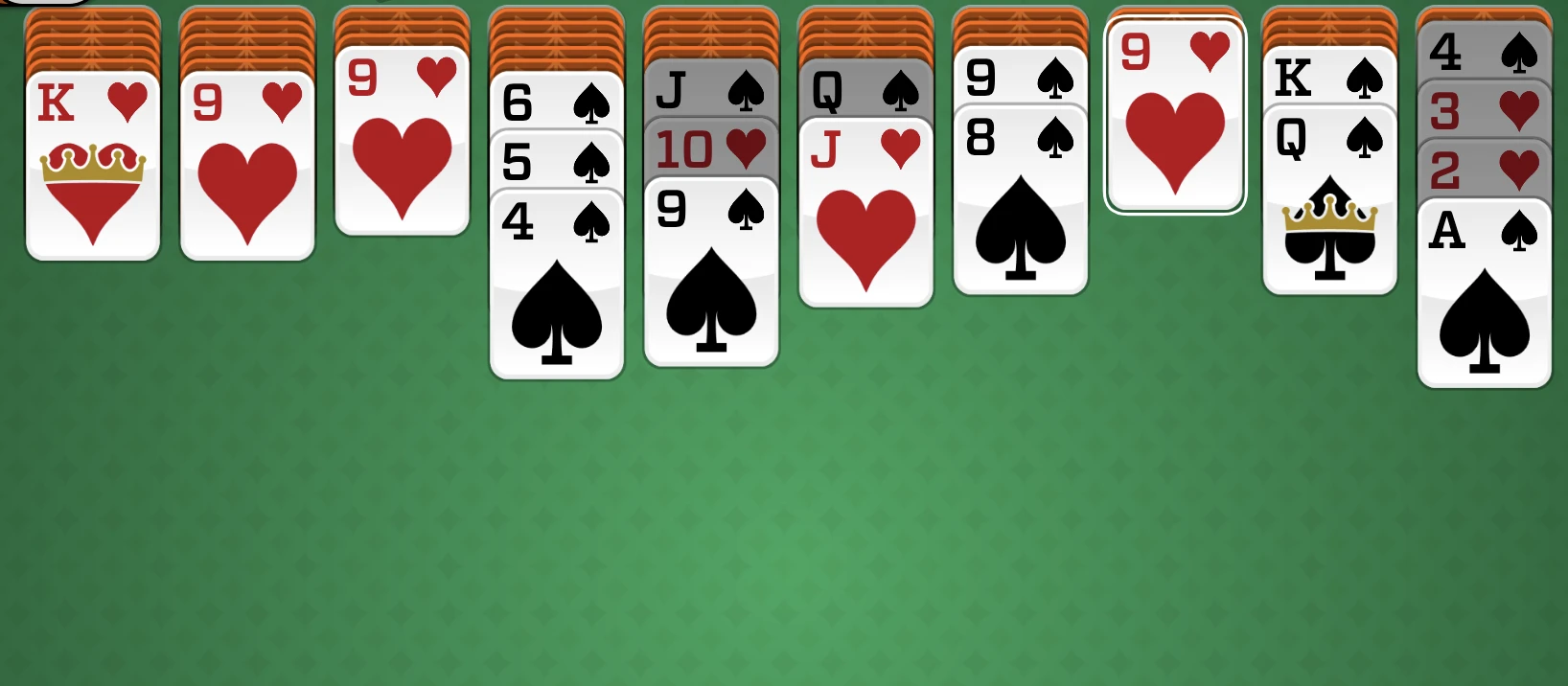
Clean Up
Cleaning up your stacks is an often overlooked tactic but can transform your approach to Spider Solitaire. Firstly, an organized tableau may leave you free to think more freely. Secondly, it is your chance to edge closer to completion without completing another move. The easiest way to clean up your stacks is to focus on deconstructing your mixed sequences and turning them into suited stacks. Any empty columns can be used to make this process easier. Even if only a partial suited sequence is created, it is a useful move.
Same Suit Low, Alternate High
At times, you may be in a position to create a suited sequence and an alternating sequence that crossover in the middle. In this case, it is always better to focus on keeping the higher-ranked cards in one suit. The lower-ranked cards will be more versatile, especially in the early stages of the game. Furthermore, breaking up a low-ranked alternating sequence and turning it into a suited sequence that connects to the existing high-ranked sequence will be easier than the inverse operation.
Don’t Move Kings To Free Columns Unless Needed
When a free column becomes available, it is often wise to focus on placing a high-ranked card in this spot. However, you may want to refrain from putting a King here. Once you do, there is nowhere for it to go as there are no other cards for it to stack onto. Therefore, opting for a 10 or a Jack might be better. This gives it the flexibility to move onto a Jack or Queen while still starting a long sequence itself. The obvious exception here is when moving a King can unlock a card that could be used directly underneath.
Make Note of Visible But Obstructed Cards
When you use the stock, it places a new card on each of the 10 columns. While you can no longer reach the cards that were previously at the top of each pile (unless the new row of cards creates a sequence on any given column), you can still see them. This visibility can be used to your advantage as you can see what card will be freed up by moving the card that’s currently in its way. In turn, this could enable you to plot a run of several moves and get yourself a lot closer to completing a full stack or uncovering more cards.
Enhancing Skills Through Solo Play
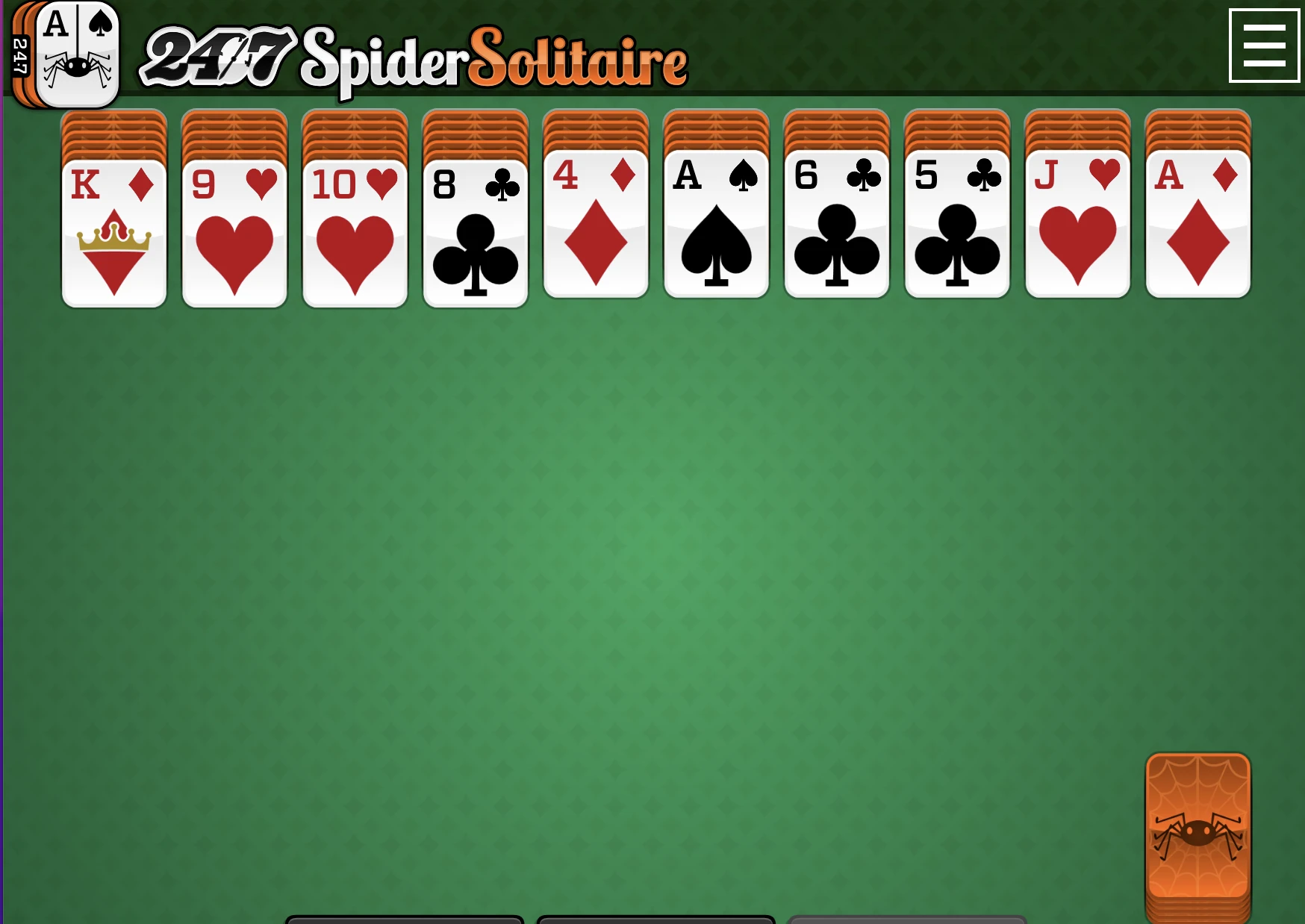
A wide variety of card games are shown to help players develop key skills like strategic and logical thinking. Both single player and multiplayer games can support your goal of improving those key life skills, but solo play can be particularly effective as long as you consciously tailor your activities with this in mind. The best ways to do this are to;
- Play a mixture of games like Spider Solitaire and Klondike to ensure that you gain exposure to a full range of skills and develop generic skills as well as game-specific strategies. You should find that you get better at each game.
- Tailor individual sessions to work on specific skills. For example, a speedrun can help you work on making quick decisions while a slow game in which you write down each move gives a deeper insight into the thought behind your decisions.
- Increase the difficulty level of your card games. When playing Spider Solitaire, this means moving up to four suits. In FreeCell, opting for a Double FreeCell game or reducing your free cells from four makes a difference.
- Take regular breaks. It may seem counterintuitive, but returning to a game that you’ve already started with fresh eyes may help you see things through a different perspective. It is a skill that serves you well in many aspects of life.
- Speak the moves as you play them. It may feel a little strange to do this, but vocalizing the moves creates an extra layer of analysis. This will naturally help you
- give more thought to the moves and help you visualize steps ahead.
Enhancing your skills may also occur through ideas like reading about card games or watching the tutorials. Ultimately, though, simply playing more frequently gives you the chance to develop and enhance your skills. Furthermore, by choosing solo card games, you can always undo your last move and then try another. This helps you compare different pathways and determine which strategies and philosophies work best. In other words, solo play is the perfect opportunity for both experimentation and repetition. Embrace them to maximize your skills.
The Mental Health Benefits of Solo Gaming
Card games aren’t just a fun pastime that help aid visual perception and strategic thinking. They also work wonders for your mental health, and solo gaming can be particularly effective as you will be more engrossed with the game itself as a result of having no distractions caused by other players.
The links between card games like Spider or Spiderette Solitaire and mental health have been extensively studied. The science backs up the anecdotal evidence, meaning players of solo card games can expect to see at least some of the following rewards;
- Increased thinking speeds - by repeating moves and spotting patterns, you naturally develop an ability to quickly analyze situations. This can support you in many aspects of your personal and professional life.
- Better alone time - becoming comfortable in your own company is a truly valuable life skill. Solo card games are a perfect opportunity to become content with being alone with your thoughts. So, you will be happier.
- Reduced stress - in a world where stress leaves 27% of adults feeling unable to complete daily functions, taking a short break to forget about their problems is a wonderful thing.
- Improved memory - when playing solo card games, you need to remember the moves you’ve made while recalling old games may also aid your strategy. Naturally, your memory can significantly improve.
- Reduced cognitive decline - keeping the mind active through brainteasers and strategic thinking is shown to reduce cognitive decline. So, solitaire and other games will support your future self.
Meanwhile, winning at solo card games and developing your skills can build self-confidence and release endorphins to increase your overall happiness. To unlock the full mental health benefits of solo gaming, though, you should also look beyond card games. Sudoku, Crosswords, and Minesweeper are just three solo-player games that will keep your brain active and reduce cognitive decline without using cards. In addition to embracing a more diverse range of skills, variety keeps solo play fresh and exciting.
How to Set Up Your Solo Card Game Space
The great thing about the solo card games mentioned above is that they only require a deck (or two) of standard playing cards. However, if you can make the activity more enjoyable by setting up a dedicated space for your solo card games. Doing this may also create the perfect setting for hosting group card nights with friends.
Ultimately, we are all unique and may have contrasting ideas about what makes the perfect space for solo card games. Still, you need to have enough space for playing your activities. Otherwise, a cramped space can make it difficult to concentrate while also increasing the risk of knocking cards over. A standard 30” x 30” card table is more than suitable, although many variants need even less space. Of course, you could use a coffee table or other desk instead. Other key issues to consider for your space include;
- Comfortable seating, especially if you plan to enjoy long card sessions.
- The lighting, as you need good visibility of each card.
- Whether you need space to hold a drink or snacks.
- Music or other relaxing background sounds to de-stress without distractions.
- Privacy, especially if you plan to leave unfinished games on the table overnight.
Alternatively, when you want to play cards on the move or without the hassle of setting up a game, simply check out 247’s 4-Suit Spider Solitaire or alternative online titles. Aside from dealing the game in seconds and removing the post-game tidy-up, it also stops you from playing illegal moves. As a beginner, it is the perfect way to develop your skill in style.
Spider Solitaire Games
More Solitaire Games
More Games
Spider Solitaire News
Disclaimer
DISCLAIMER: The games on this website are using PLAY (fake) money. No payouts will be awarded, there are no "winnings", as all games represented by 247 Games LLC are free to play. Play strictly for fun.

